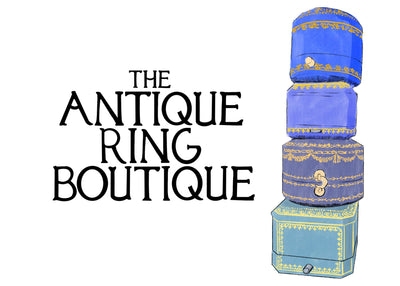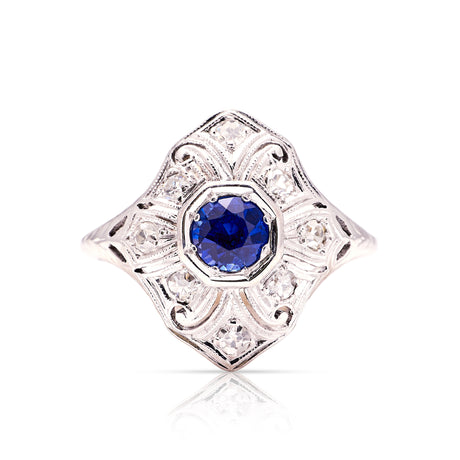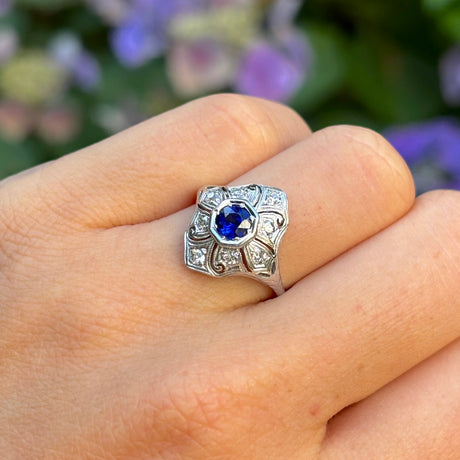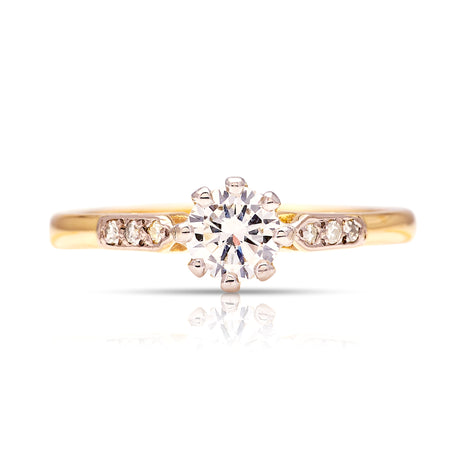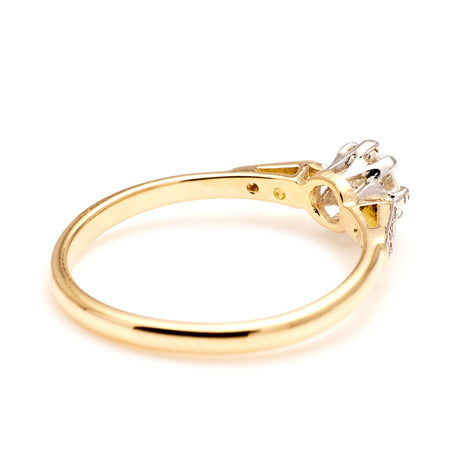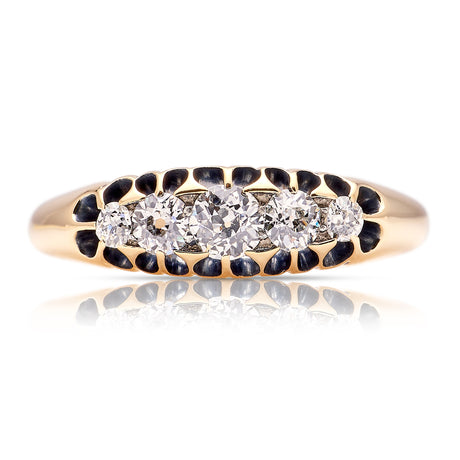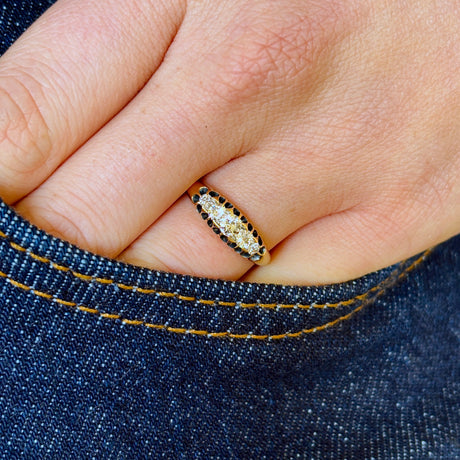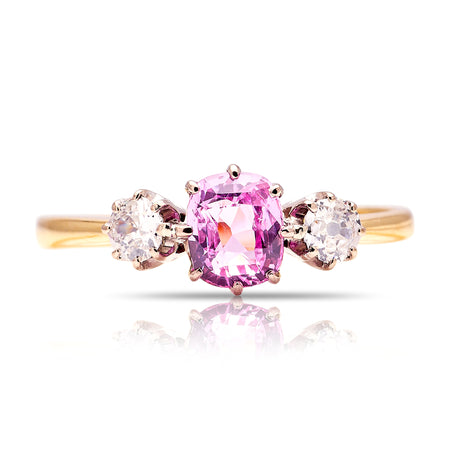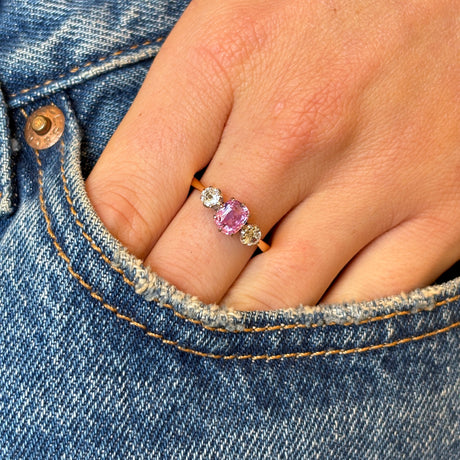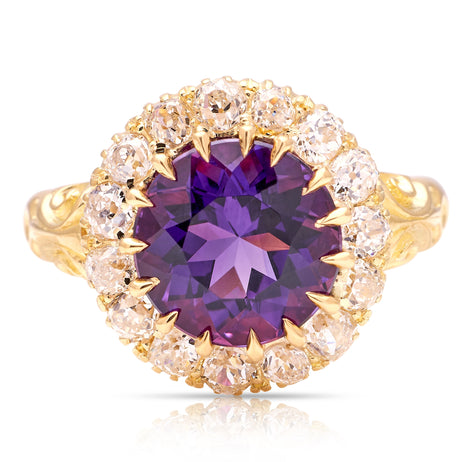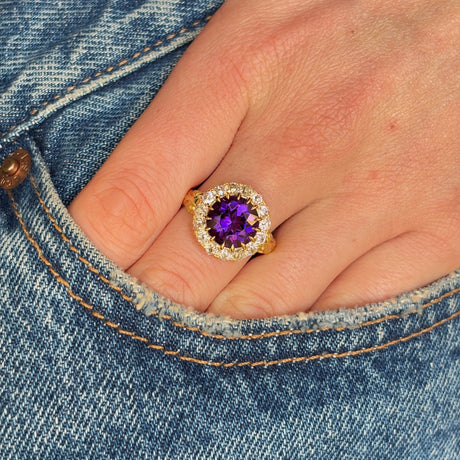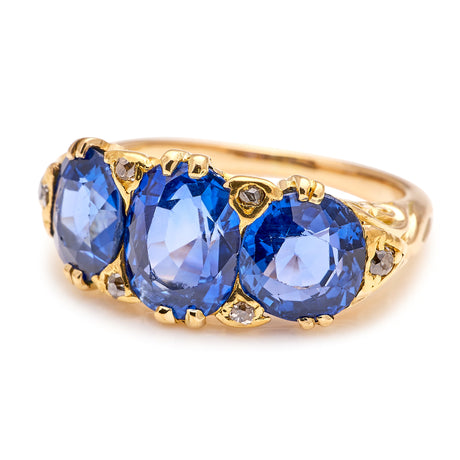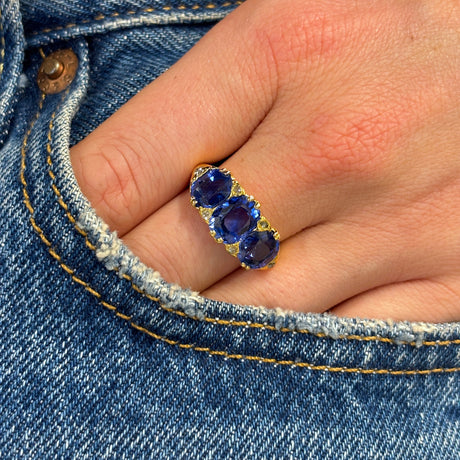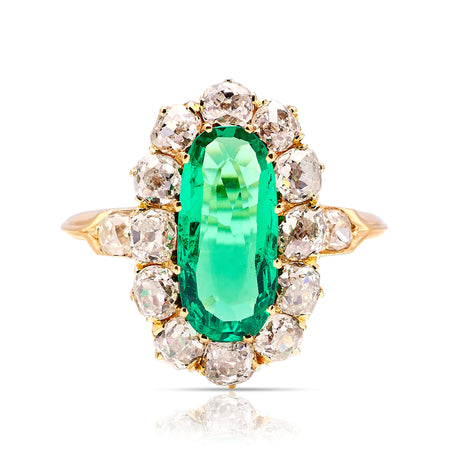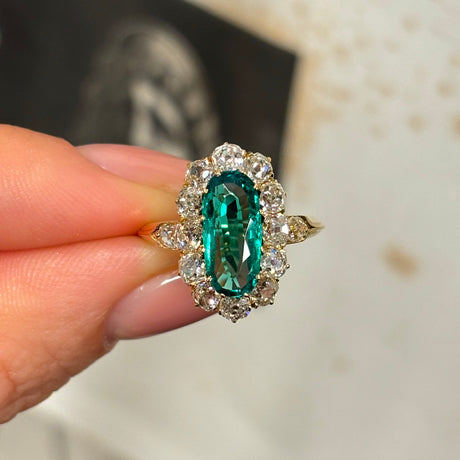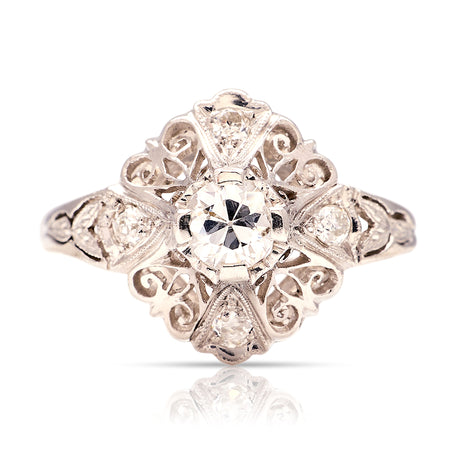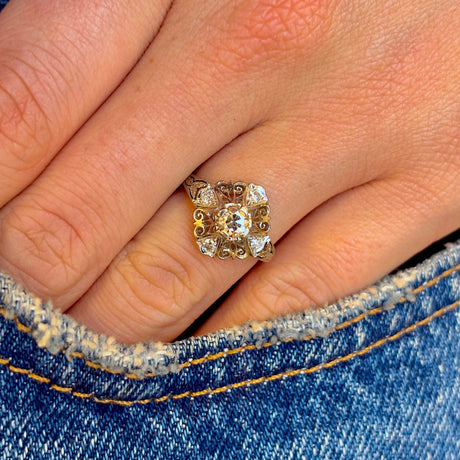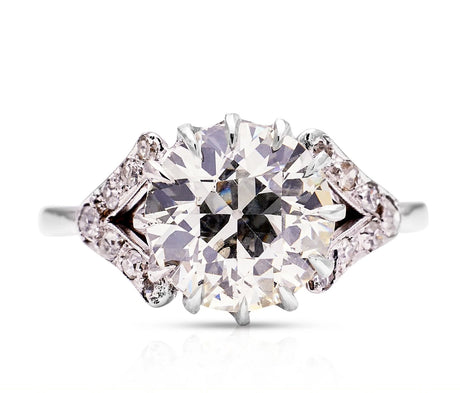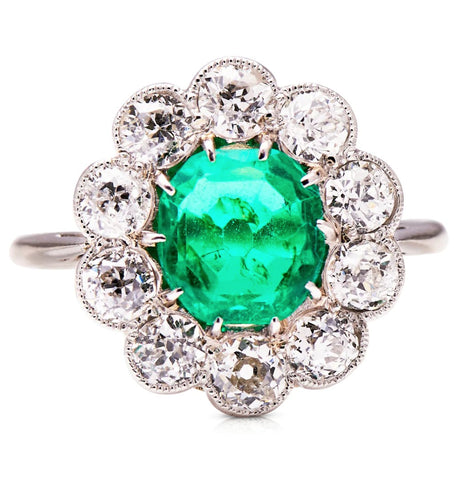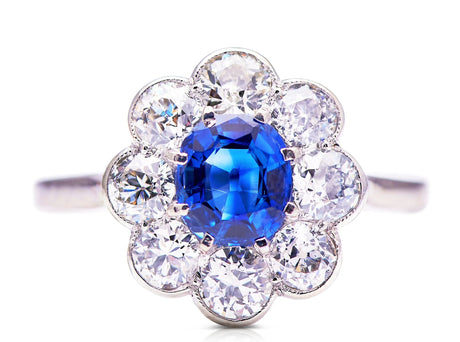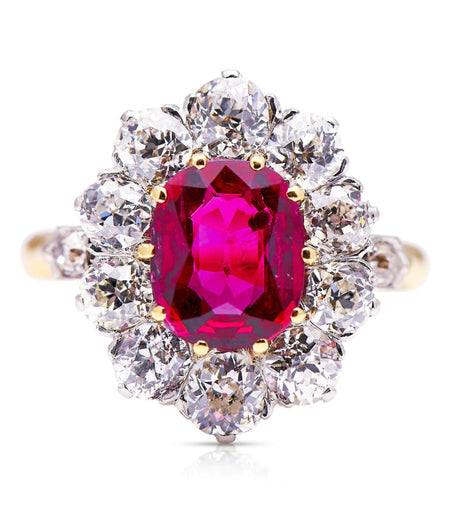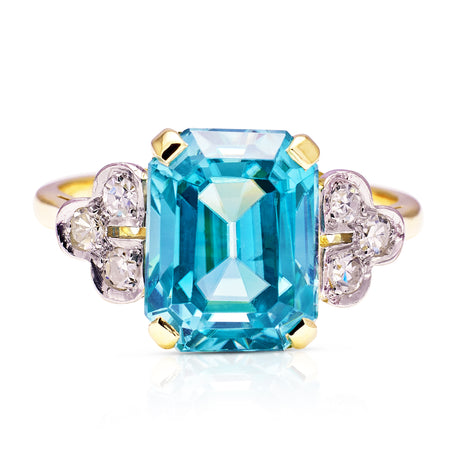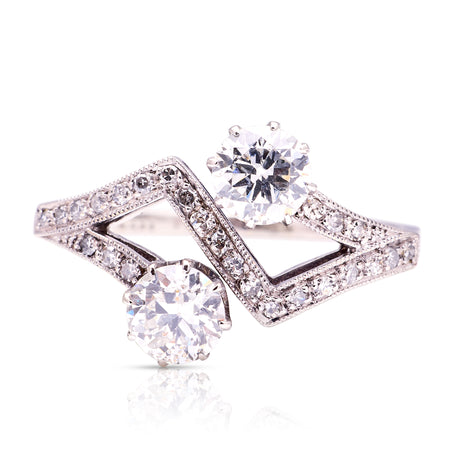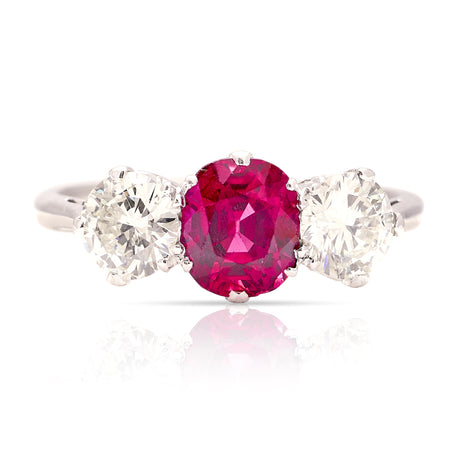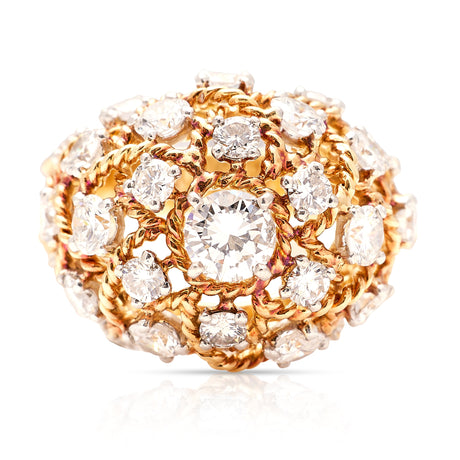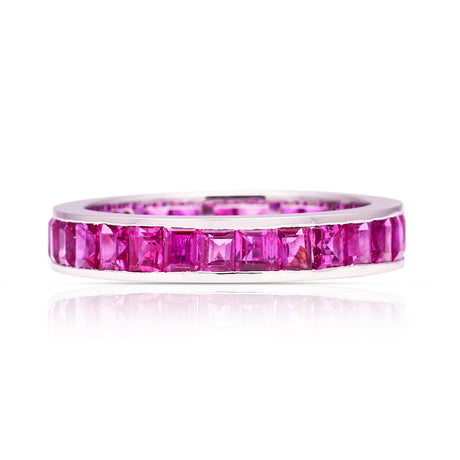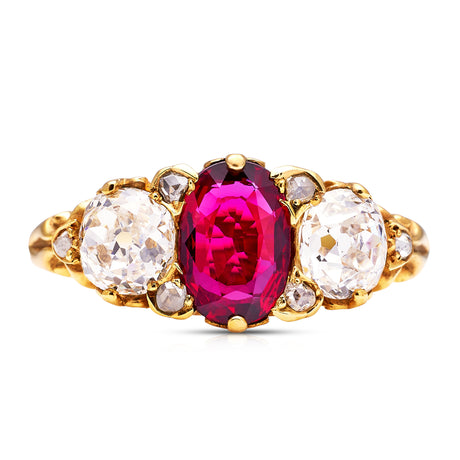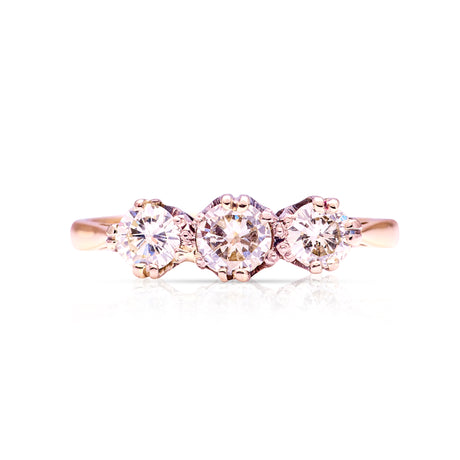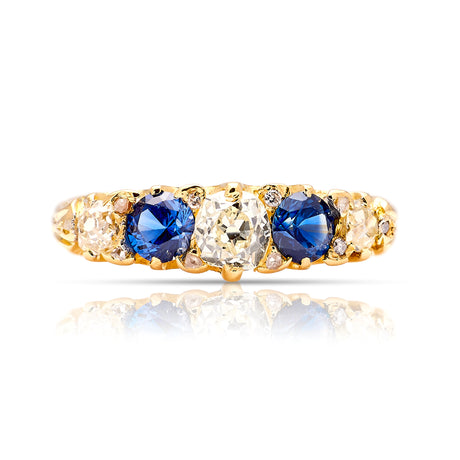First of all, congratulations! If you’re reading this, chances are you’ve found someone amazing and are planning to pop the question. That’s tremendously exciting, romantic and brave, and we’re delighted for you.
While you might be thinking about the words and location, choosing the perfect engagement ring is vital to any proposal. Getting it right can be tricky, and there’s certainly lots to consider. From carats to ring sizes and everything in between, many things combine to create the ideal symbol of romance for your significant other.
Step 1: The Planning Phase
If you want to get this right, the first step will involve a bit of homework.
How to get the right engagement ring size
Finding your partner’s ring size without spoiling the surprise can be the most challenging part of engagement ring shopping. To start, we’d suggest any of the following tactics:
- Measure one of their rings at home using our handy ring sizing guide
- Take a ring they already wear to a jeweller for measuring
- Ask one of their best friends or family members for help — if you trust them to keep a secret!
- If you can’t find their actual size before popping the question, don’t panic. We offer a complimentary one-time size adjustment where possible (some ring materials mean this isn’t always available). Feel free to check with us if you think resizing might be needed.
Sam Mee, Founder of The Antique Ring Boutique, adds: “If your detective work fails, we can still make a reasonable estimation of the right size. For example, the average UK woman’s ring size is around L or M, while a male’s is T.”
How much should you spend on an engagement ring?
Next, it’s a good idea to have a budget in mind. While tradition suggests spending anywhere between one to three months' salary, that’s not a requirement.
Surveys show that the average UK engagement ring costs between £1,600-2,000. But there’s nothing wrong with spending more or less than that — it all depends on your tastes and circumstances. You should only spend what feels right and what you can afford.
Consider things like your savings, salary and financial situation to come up with a rough budget. We offer a variety of designs to accommodate most budgets, so if you have a top figure in mind, just ask. That way, we can narrow your shopping list to only the most relevant options.
Vintage or new?
Finally, it’s an excellent idea at this stage to have a general idea of ring styles. Are you looking to design your own ring, buy a new one, or choose a classic vintage piece?
Designing your own ring can be a lengthy and more costly process. If buying new, you can typically choose from a vast range of budgets and qualities. Meanwhile, an antique or vintage solitaire ring can range from under £1,000 to £10,000 and beyond, depending on factors like the cut, jewel, design intricacy, craftsmanship, era and quality.
With a general idea of size, budget and styles, you can narrow down the field.
Step 2: Choosing an engagement ring
In Step two, we will think more deeply about what your partner likes — and what type of engagement ring would fit their lifestyle.
What does your significant other like?
Now, it’s time to examine the engagement ring style more closely. Think about the following question: Do they have a “type”?
By this, we mean does your partner already favour jewellery of a particular style? If you know that they are a fan of antique jewellery, for instance, then an antique engagement ring is a great choice. Similarly, if they already own specific metals or gemstones, that could be a clue as to their favourites. Check their existing jewellery for ideas.
If your partner doesn’t own much — or any — jewellery already, think about their other tastes. What sort of fashion styles do they prefer? You might be able to match an engagement ring to their preferences this way, too.
At this stage, you could once again lean on a trusted friend or family member for advice if needed.
Find the right ring setting and design
The next step is picking the right engagement ring settings to suit your partner’s style and activities. People tend to wear their engagement rings daily, so if you want it to stand the test of time, there are a couple more things to consider when choosing.
For example, some stones are harder than others. The best choice for an engagement ring is a harder stone that will stand up to daily wear. The best options for this are usually towards the top of the Mohs scale of hardness, such as:
- Diamond
- Sapphire
- Ruby
- Aquamarine
- Garnet
- Topaz.
While many people judge engagement rings on their looks, it’s also important to think about the practical side. Does your partner do any activities that could damage a stone? During your search, check the engagement ring settings to see if they’d be a good candidate. Generally, the more a jewel sticks out, the more likely it will get the occasional knock.
For maximum durability, the edges and corners of the stone should be adequately covered by claws or even entirely covered by a collet setting. This way, when it inevitably gets knocked, it’s the metal and not the stone that takes the hit. Remember that even the hardest stones can be damaged, so it’s a good idea to remove the ring during physical or hazardous activities.
How big should an engagement ring be?
Next, you can start to get an idea of size. A lot of this comes down to personal taste — if you already know that your partner prefers smaller, more subtle pieces of jewellery, then a smaller stone could be a good idea.
Similarly, if you want to make a statement with your choice, choose a larger stone. In some cases, you might not need to buy a huge one — a stone’s cut and setting will change how you perceive it, so some can look bigger (or smaller) than they actually are. For example, many antique pieces feature flat cuts that give the appearance of a larger stone. Any high-quality stone with careful craftsmanship will also reflect light and demand attention.
You can get a general idea of stone sizes by asking for their carat weights. At their simplest, carats are used to describe how physically large a stone is. Some examples from around the world could help you decide:
- In the UK, the average diamond engagement ring is around 0.6 carats.
- This rises in the USA, where the average engagement ring is 1 carat or higher.
- Europeans prefer smaller rings, with an average of 0.5 carats.
While tastes around the world vary, it’s important to use these average sizes only as a guide. If your partner prefers a more subtle ring, then choosing a lower-carat design is fine. Likewise, feel free to go above the one-carat mark for a statement piece.
